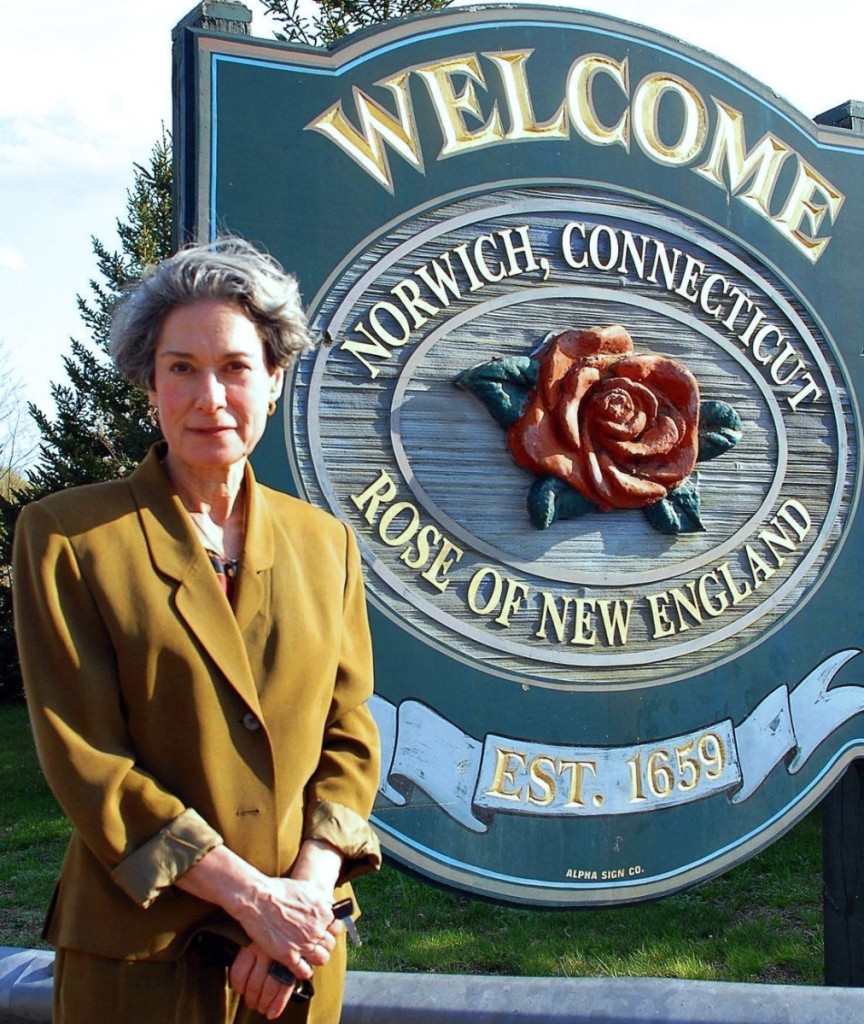Vivian Zoë directs the Slater Memorial Museum, a little-known gem in the historic town of Norwich, Conn. The institution is associated with Norwich Free Academy (NFA), founded in 1854, and with NFA alumnus Henry Watson Kent (1866-1948), a founder of the Metropolitan Museum of Art’s American Wing. Steward of a nearly unsurpassed collection of antique plaster casts, as well as works by such Nineteenth Century masters as John Denison Crocker (1823-1907), Zoë, a career arts administrator, is pushing forward with a new gallery devoted to Asian art and with a tribute to Ellis W. Ruley (1882-1950), the Norwich-born Outsider artist whose death remains a mystery.
How has the Slater survived so unchanged in its architecture and collections?
Actually, the museum has changed a great deal in its 130-year history, starting with the addition of the Converse Art Gallery, our 3,600-square-foot temporary exhibitions space, added in 1907. The original 1886 Romanesque Revival structure designed by Stephen Carpenter Earle is protected by NFA and State of Connecticut historic restrictions. We consider it the most important object in our collection. In 2011, we added an atrium. We have about 12,000 objects, about a quarter of which are on display at any moment. They reflect the region’s art and industry over 350 years.
Is it true that your plaster casts collection is one of the largest in the United States? Is it still relevant?
Yes, it’s one of the largest and earliest. We use the casts exactly as they were used in 1888: to teach the classics and, especially, as subject matter for artists and art students to draw. In the Nineteenth Century and earlier, this was called “drawing from the antique.” That was when antique meant something thousands of years old.
What was Henry Watson Kent’s great contribution to the Slater?
A trained librarian, Kent gave us the methodology for categorizing and recording our collections. He wrote extensively, not only about the classics, but also about museology. Early on, he understood the value of temporary exhibitions to encourage repeat visitation and plumbed local collections liberally, including that of William Slater. Kent created a how-to guide for other museums wishing to install cast galleries, and supervised the acquisitions and installations of cast collections at museums in Springfield, Mass., Pittsburgh and Chicago, among others. He was also a founder, in 1909, of the American Association of Museums (now American Alliance of Museums). Finally, he truly loved and appreciated the importance of local history, particularly manifested in art and furnishings. His experience with antiques in southeastern Connecticut led him to propose the American Wing at the Met.
Can you tell us more about the Slater’s trove of John Denison Crocker paintings?
Crocker’s paintings relate to our interest in art and artifacts reflecting Norwich history. He recorded the transition of the region from largely agrarian to industrial. Although certainly among a large group of regional American painters who were influenced by the Hudson River School of the previous generation, Crocker documented Norwich and environs and its people for over half a century. He had a particular skill rendering skies. And with the humidity in the air of three rivers coming together here, plus particulate matter from mills, the sunsets and sunrises were most likely spectacular. Crocker captured them masterfully.
Other collection treasures?
We have a number of early Twentieth Century works that also reflect the built environment and landscape of the region. Artists who come to mind are Ozias Dodge (1868-1925), director of the NFA-affiliated Norwich Art School from 1897 to 1900; Alexander Ritchie (1863-1946), a member of the Huntington family; and Charlotte Fuller Eastman (1878-1965), who followed Dodge as director of the art school and kept notebooks with hundreds of sketches of Parisian life at the turn of the Twentieth Century.
You’ve directed the Slater for almost 15 years. Of what are you most proud?
I’m most proud of the work we’ve done to professionalize the museum, particularly exhibitions. From scratch, we developed a recruitment and rigorous 20-week docent training program. Our current, devoted corps gives regular tours for adults and students of all ages and contributes to the development of programming and events. Volunteers and interns now work in all capacities and are an essential part of our practice. We recently closed our third award-winning exhibition, “Bela Lyon Pratt: Sculptor of Monument.” Two years ago, we mounted “John Meyer of Norwich: An American Original,” which attracted record crowds. Such projects are a stretch for a professional staff of three.
What’s next?
We are developing a new long-term exhibition of Asian art drawn exclusively from our extensive collection. For the fall of 2018, we are working with a community group and an outside curator to present an exhibition on the life and work of Ellis Ruley. It will reflect on the late embrace of this artist and his unusual life by contemporary Norwich citizens.
The Slater Memorial Museum is at 108 Crescent Street in Norwich. For more information, 860-887-2506 or www.slatermuseum.org.
-Laura Beach






